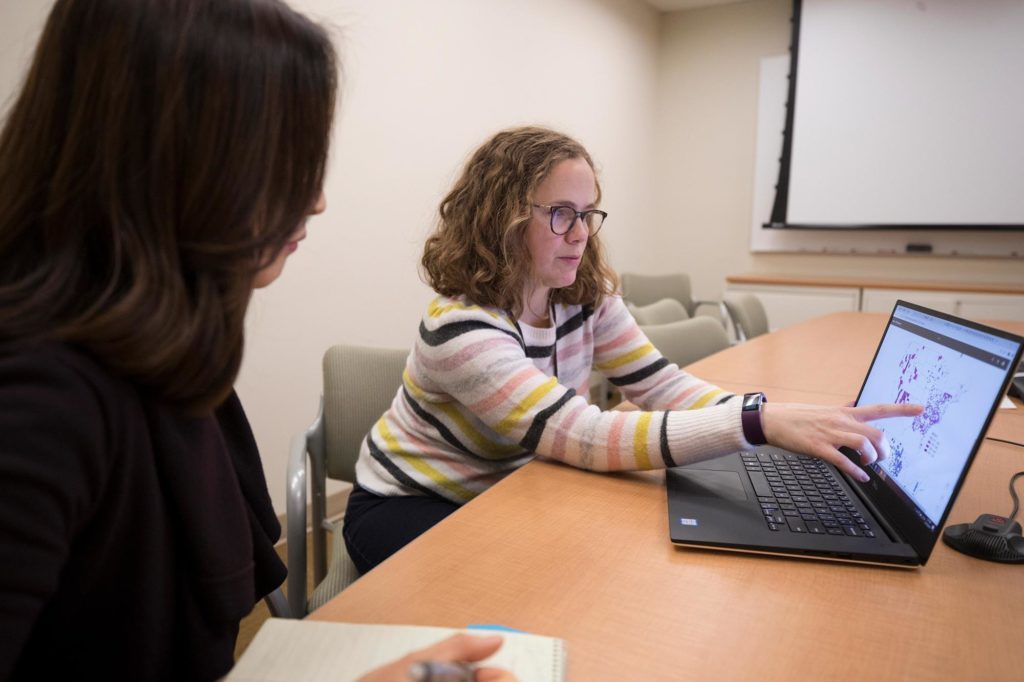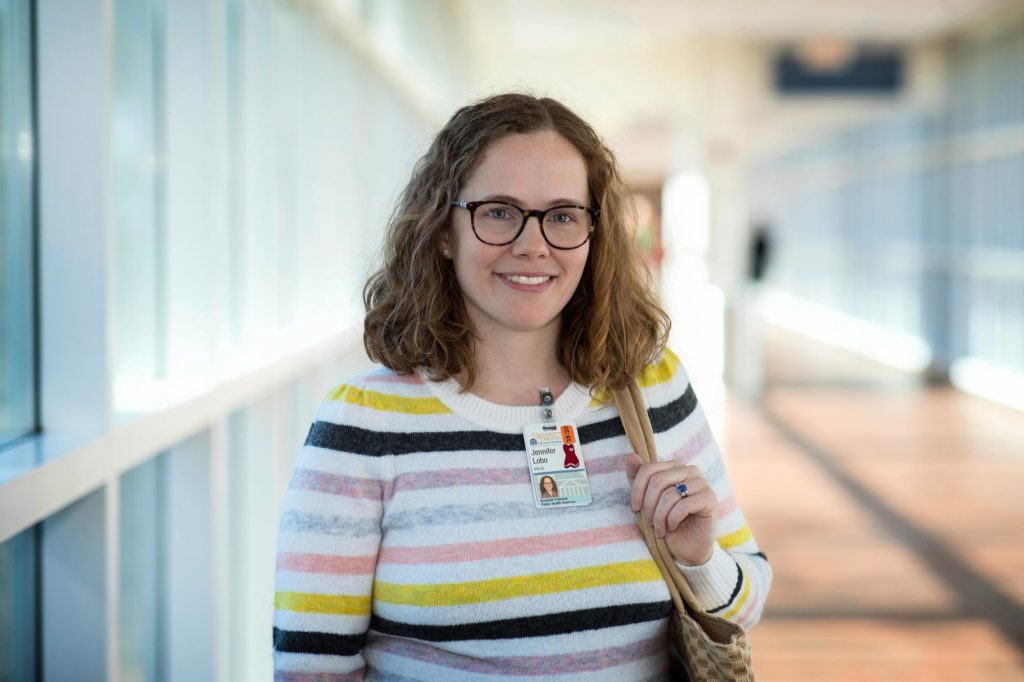
Jennifer Lobo, an assistant professor of biomedical informatics, was part of a team that studied the impact of Medicaid expansion both inside and outside the Diabetes Belt. (Photos by Dan Addison, University Communications)
Medicaid expansion dramatically reduced the numbers of low-income residents without insurance in the Diabetes Belt, a swath of 644 counties across 15 southeastern states (including Virginia) that are stricken with high diabetes rates, a new study has found.
The increase in people with insurance helps address the lack of access to care that is a key contributor to the diabetes epidemic. Prior to the Affordable Care Act, the Diabetes Belt counties had higher uninsured rates than other areas, but that was erased by 2014 through Medicaid expansion.
“With increased access to care, patients are more likely to receive the care they need to prevent diabetes or at least slow the progression of the disease,” said Jennifer M. Lobo of the University of Virginia School of Medicine’s Department of Public Health Sciences. “Addressing complications of diabetes as early as possible through regular preventive care can greatly improve quality of life.”

Jennifer Lobo and her team found that Medicaid expansion dramatically reduced the numbers of low-income residents without insurance in America’s “Diabetes Belt.”
Alarming Diabetes Rates
More than 11% of adults in the Diabetes Belt have the condition, compared with 8.5% elsewhere. The disease is believed to be a significant contributor to the shortened life expectancy seen in the region.
To get a sense of the impact of Medicaid expansion both inside and outside the Belt, the researchers looked at uninsured rates among adults age 64 or younger with household incomes equal to or less than 138% of the federal poverty line. In 2012, 39.3% of those in the Diabetes Belt were uninsured, compared with 33.9% outside the belt. Those numbers fell to 13.1% and 15.1%, respectively, in 2016.
By 2016, uninsured rates were 15% higher in states that had not expanded Medicaid, the researchers report. “States that expanded Medicaid achieved an absolute reduction of 20 percentage points in uninsured rates, while states that did not achieved 13% reduction,” the researchers write in a new paper outlining their findings.
Broadening their scope to look at all income levels, the researchers found that Medicaid expansion led to a 4.8% overall reduction of the uninsured rate in the Diabetes Belt.
While additional research is needed to determine if Medicaid expansion led to improved care and outcomes, the researchers conclude: “Medicaid expansion has had its intended effect of increasing insurance coverage among the low-income populations.” They note, “Eight states that contain Diabetes Belt counties are not expanding Medicaid at this time. Medicaid expansion may help realize more equity in insurance coverage between Belt and non-Belt areas in these states.”
Lobo added, “We hope that our findings encourage policymakers to maintain and expand policies that increase health insurance coverage, particularly in areas like the Diabetes Belt which have a greater prevalence of the disease. Whether increased insurance coverage is enough to narrow the gaps in diabetes prevalence between the Diabetes Belt and the rest of the country is yet to be seen, but one thing is clear: The Diabetes Belt is an area that need more attention by policymakers.”
Findings Published
The researchers have published their findings in the scientific journal Diabetes Care. The research team consisted of Lobo, Soyoun Kim, Hyojung Kang, Gabrielle Ocker, Timothy L. McMurry, Rajesh Balkrishnan, Roger Anderson, Anthony McCall, Joseph Benitez and Min-Woong Sohn.
The project was supported by the National Institutes of Health’s National Institute of Diabetes, Digestive and Kidney Diseases, grant R01DK113295.
To keep up with the latest medical research news from UVA, subscribe to the Making of Medicine blog.
Filed Under: Clinical, Education, Featured, Media Highlights
